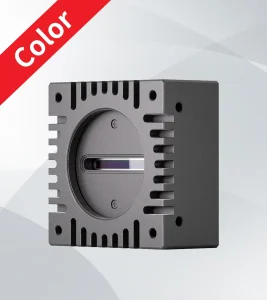There are many factors to consider when selecting an industrial camera in order for it to effectively meet specific needs and performance requirements.
Select your industrial camera by first considering the resolution requirements. For applications, like inspection and quality control high resolution camera that offer even 12 megapixel sensor provide the necessary details and precision. For instance, in semiconductor manufacturing cameras with greater than 8-megapixel resolution are often utilized to inspect the fine circuit patterns.
Frame rate is just as important. High speed imaging must need cameras that offer vision beyond 60 frames per second (fps). Cameras able to capture images of fast-moving automotive parts in motion under a frame rate of 30 fps or higher are required for the highly dynamic environment present on most assembly lines.
Think about the camera interface. The third type of camera supports multiple interfaces such as GigE Vision, Camera Link and USB 3.0 specifications that are relevant in the industrial sector. Different data transferspeeds and compatibilities each interface provides. For example, GigE Vision cameras provide data speed of up to 1 Gbit per second (ideal for long-distance connectivity), while USB 3.0.Configuration is good along with speeds that can reach as high a5 Gbits/sec or even higher and you have the standd\Supports also works fot he same requirements but below gives better resulting ease vital in most applications available from our company.
Without doubt, the lens compatibility of camera matters too Make sure the camera include the right lens support, standard C-mount or special optics that you need for your application. For instance, a camera intended for use in a lab might need to be fitted with high-magnification lens to make accurate measurements.

Check the Camera for its durability and environmental limitations. Cameras intended to be located in harsh industrial environments are likely going to need things like IP67 ratings for dust and water resistance. For example, cameras deployed in food processing plants must be able to endure high levels of water and contaminants.
At the same time though, keep in mind that you get what you pay for — considering the price of a mirrorless camera against its built and shooting quality. The price of the industrial camera ranges from several hundred to tens of thousands. The higher resolution, frame rate and additional functions will dominate Heya's product content. Making sure that your budget is in line with the specs you need will net the best value.
In cases where your application is very specialized, you should also refer to industry standards and best practices applicable to that kind of app. One industry where this high resolution and color accuracy would be important is in the pharmaceutical sector, to keep a watch over product integrity.
In conclusion, consideration in the selection of an industrial camera is given to resolution, frame rate, interface options) lens compatibility and durability or cost. All these factors are important to make sure the camera satisfies your application needs and gives you reliable performance. To learn more about choosing industrial cameras, please visit wiselyindustrialcameras
